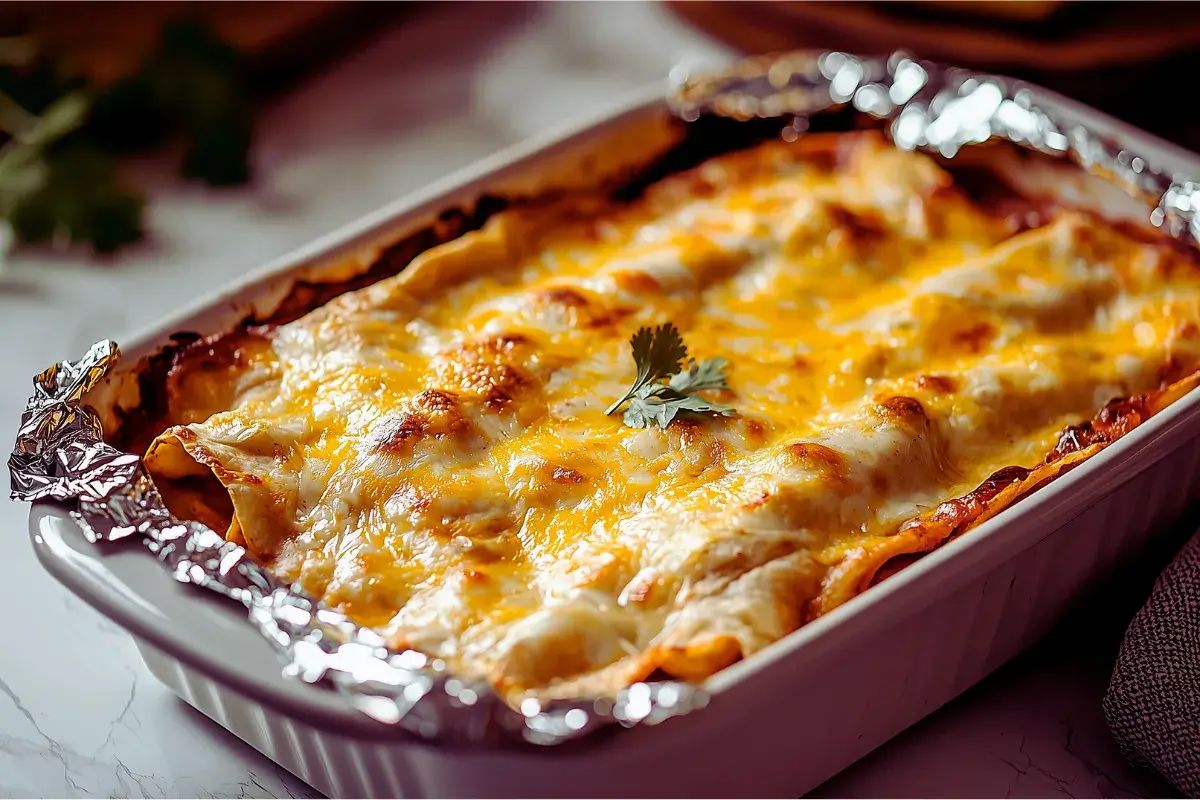Should You Bake Enchiladas Covered or Uncovered?
Ah, enchiladas—the ultimate comfort food wrapped in tortillas, drenched in sauce, and smothered in cheese. But when it’s time to toss them in the oven, a surprisingly common debate sparks: should you bake enchiladas covered or uncovered? This one question can make or break your dish, and knowing the right answer is the key to enchilada greatness.
Whether you’re going for that golden cheese crust or aiming for tender, sauce-infused layers, the answer isn’t always one-size-fits-all.
In this guide, we’ll dive into everything you need to know to bake enchiladas just right. We’ll look at traditional versus modern methods, pros and cons of covering with foil, baking times and temps, and some chef-approved secrets to avoid sogginess. Plus, we’ll wrap up with expert FAQs, because we know you’re not the only one wondering if enchiladas are better with corn or flour tortillas.
Let’s start with the basics before we sizzle things up.
Understanding the Basics of Baking Enchiladas
What Are Enchiladas? A Brief Overview
Enchiladas are a classic Mexican dish made by rolling tortillas around a filling—usually meat, cheese, beans, or a mix—and covering them with a flavorful sauce. They’re then baked to bubbly perfection. Whether you’re team red sauce or love a creamy verde, the secret to good enchiladas in the oven begins before they ever hit the heat.
Traditionally, enchiladas were cooked in a pan with freshly fried tortillas and hot sauce poured directly over them. But today, baking them in the oven has become the go-to for convenience and flavor fusion. It brings out the richness in the sauce and gives the cheese a glorious melt.
But here’s the deal—how you bake them (covered vs. uncovered) can make or break the dish.
Traditional vs. Modern Enchilada Baking Methods
Historically, enchiladas weren’t always baked. In fact, in many authentic Mexican kitchens, the tortillas are flash-fried, stuffed, then topped with warm sauce and served straight away—no oven necessary. This keeps the tortillas firm and the dish fresh-tasting.
However, in modern kitchens—especially in the U.S.—baking enchiladas helps blend the sauce and fillings more deeply. It’s also great for feeding a crowd. Baking covered helps trap moisture, while baking uncovered can give you that golden top layer and crisp edges.
So, should you bake enchiladas covered or uncovered? Well, that depends on the result you’re after, and we’re about to unpack that in detail.
Stay with us as we dive into the pros, cons, and expert tips to help you make the ultimate enchiladas—without the sog.
Should You Bake Enchiladas Covered or Uncovered?
When to Cover Enchiladas: Moisture and Cheese Melting
Here’s the million-dollar question: Should you bake enchiladas covered or uncovered? The answer depends on your end goal. If you want soft tortillas, gooey cheese, and moist fillings, covering them with foil is the way to go. It traps steam, allowing everything to melt and mingle beautifully—especially when your enchiladas are stacked with cheese or delicate ingredients.
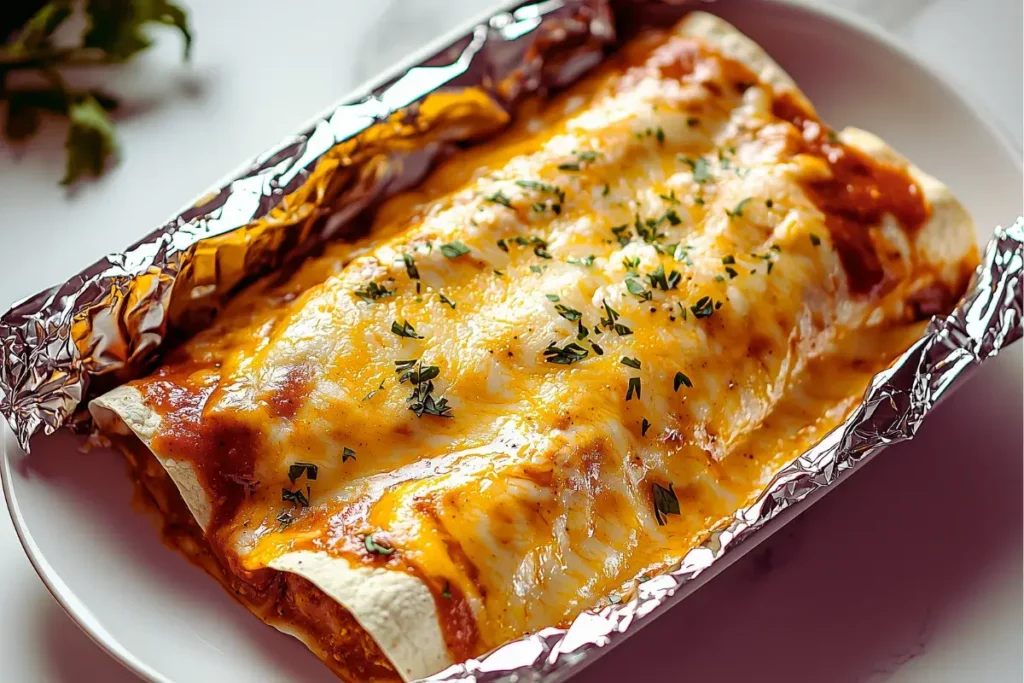
Covering is also a smart choice if you’re baking enchiladas in advance and reheating later. If you’re still asking should you bake enchiladas covered or uncovered?, this is a perfect example of when foil can be your best friend. It keeps them from drying out. Not to mention, when you’re using a sauce that easily evaporates, like red chile or verde, that foil layer acts like a flavor-saving superhero.
A pro tip: cover the enchiladas for the first 20 minutes, then uncover them for the last 10 to get the best of both worlds. You get moisture and that irresistible bubbly cheese top.
If you want more tips on elevating your enchilada game, don’t miss this guide on making perfect enchiladas.
When to Bake Uncovered: Crispiness and Texture Factors
On the flip side, if you’re all about that crispy top, uncovered baking wins the race. So again, should you bake enchiladas covered or uncovered? If texture is what you crave, the answer leans uncovered. Leaving your enchiladas exposed allows the sauce to thicken and the cheese to brown and bubble—giving you that Instagram-worthy golden finish.
Some folks even prefer dry, crispy edges as a textural contrast. And hey, if your tortillas are already fried—like in this method of frying flour tortillas for enchiladas—then uncovered baking is practically made for you.
Still unsure? The best practice is to bake them covered first, then remove the foil for the last 10–15 minutes. That way, your enchiladas stay juicy and get a crispy crown.
So, should you bake enchiladas covered or uncovered? If you love a soft bite with maximum moisture—cover them. If you crave crunch and color—uncover ‘em. Or, better yet, do both.
Pros and Cons of Covering Enchiladas
Benefits of Covering Enchiladas While Baking
There’s no doubt that covering enchiladas in foil has its perks. First off, it keeps the moisture locked in, especially if your oven tends to run hot. Covered baking helps ingredients like cheese, beans, or shredded chicken soak up the sauce, keeping the enchiladas tender—not dry or cracked.
Plus, if you’re using lean meats or minimal sauce, covering prevents the filling from drying out during cooking. This method is also ideal for baked casseroles prepared ahead of time and reheated later.
For folks wondering what makes enchiladas better, keeping them covered can be part of the secret. According to Crispy Enchiladas, the trick is to manage the sauce-to-cheese ratio—and foil plays a big role in helping that balance stick.
Drawbacks of Covering: Risk of Sogginess and Steaming Tortillas
Now, let’s keep it real—covering enchiladas isn’t all sunshine and melted cheese. One major drawback? Soggy tortillas. Steam has a way of softening the outer shell so much that it loses structure. If you’re working with super thin or unfried tortillas, they can turn mushy fast.
Another issue? No browning. Covered enchiladas won’t get that golden cheesy layer on top unless you remove the foil near the end. If texture is your thing, this could be a dealbreaker.
And let’s not forget sauce evaporation. If your enchiladas are swimming in sauce and covered the whole time, you might end up with a soupy bottom. Nobody wants soggy bottoms.
In short, there’s no black-and-white answer. Each method has its place—and knowing when to use each gives you total control over taste and texture. So if you’ve been wondering should you bake enchiladas covered or uncovered?, the answer lies in your goal: moist, soft, or crispy and golden.
Expert Tips to Prevent Soggy Enchiladas
Prepping Tortillas: Frying vs. Steaming
One of the biggest complaints home cooks have is soggy enchiladas. Nobody wants their meal turning into a wet, mushy mess. So, should you bake enchiladas covered or uncovered? Well, before you even hit the oven, the real game-changer is how you prep your tortillas.
Frying your tortillas briefly in hot oil creates a thin barrier that helps them hold up better under saucy conditions. This technique prevents them from absorbing too much sauce too quickly—a classic mistake that leads to soggy bottoms.
On the other hand, steaming or using tortillas straight from the package can cause them to tear and soak up liquid like a sponge. If you’re going this route, at least warm them slightly in a skillet to make them more pliable and resilient.
Want to see this technique in action? For more kitchen tips and authentic prep methods, check out the tortilla-handling methods in other Mexican recipes on our site.
Layering Ingredients Strategically to Avoid Excess Moisture
Layering matters—big time. If you pile in wet ingredients like salsa, watery beans, or juicy meat without draining them, you’re asking for sog. Instead, let cooked ingredients cool slightly and strain anything overly moist.
Use a thin layer of sauce on the bottom of your baking dish—just enough to prevent sticking. Then, add more sauce on top after your enchiladas are rolled and placed in the pan.
Pro tip: add cheese between the layers. It creates a little buffer that slows down sauce absorption. Also, bake uncovered for the final few minutes. That blast of dry heat helps reduce excess moisture and brings back structure.
So again—should you bake enchiladas covered or uncovered? If you’re layering smartly and managing moisture, either method can work like a charm.
Covered vs. Uncovered Baking Based on Filling Type
Cheese Enchiladas: Bake Covered for Melting Power
Let’s get cheesy—literally. When you’re making cheese enchiladas, baking them covered is usually the best choice. Why? Because cheese needs gentle heat to melt evenly. Covered baking traps the heat and allows the cheese to become rich, gooey, and irresistible without drying out.
Plus, cheese enchiladas tend to have a higher sauce-to-filling ratio. The steam that builds up under the foil helps infuse every bite with saucy goodness. It’s like a flavor sauna for your tortillas.
If you’re still asking, should you bake enchiladas covered or uncovered?, then consider the filling. Cheese fillings benefit most from being covered, at least for the first half of the bake.
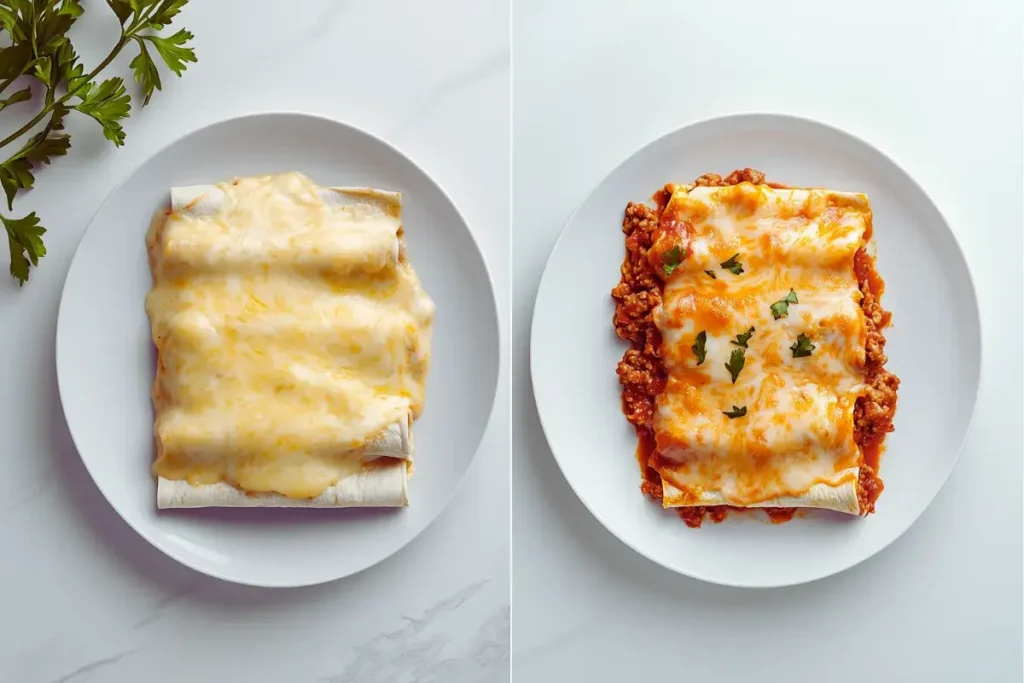
Meat and Bean Enchiladas: Crisp Tops Work Best
Now, meat and bean enchiladas are a different story. These heavier fillings don’t release as much moisture, so there’s less risk of sogginess. In fact, baking them uncovered can work to your advantage. It gives the top layer of cheese a nice golden finish, while keeping the inside hearty and firm.
If your meat is already cooked and well-drained, baking uncovered helps add texture and reduces extra moisture. This is especially true with ground beef or shredded chicken that’s been simmered in sauce.
Still unsure about your baking method? Then play it safe: bake covered for the first 20 minutes, then uncover for the last 10. You’ll get tender insides and a crispy crown.
For more delicious recipe inspiration, check out our What Is the Secret to Good Enchiladas and more on the site!
Baking Temperature and Time Tips
Ideal Oven Temperature for Covered and Uncovered Baking
Getting the temperature right is key to delicious enchiladas. Most recipes recommend baking at 350°F (175°C), whether you’re going covered or uncovered. It’s the sweet spot—hot enough to melt the cheese and warm the fillings without drying everything out.
When baking covered, that trapped steam helps everything heat evenly. But if you’re baking uncovered, 350°F still works well; just watch that the edges don’t crisp up too quickly. If you want a browned top without burning the bottom, uncover the dish during the last 10-15 minutes of baking.
You might wonder again, should you bake enchiladas covered or uncovered? The answer may depend more on timing and temperature than you think. Covered baking protects the enchiladas during longer cooking times, while uncovered methods can go shorter to avoid drying out.
How Long Should You Bake Enchiladas?
Generally, enchiladas need 25 to 30 minutes in the oven. If they’re covered, aim for the full 30 minutes so the steam can work its magic. If you’re baking uncovered, stick closer to 20–25 minutes and keep a close eye on the top.
Don’t forget to let them rest for about 5 minutes after baking. This helps the sauce thicken and the flavors settle—plus, no one wants molten lava mouth!
Alternative Baking Techniques
Using Foil Loosely to Achieve Both Texture and Moisture
If you’re stuck in the middle of the should you bake enchiladas covered or uncovered? debate, here’s a clever trick: tent the foil. Cover the dish loosely with foil, allowing steam to escape around the edges while keeping most of the moisture inside.
This approach works wonders if you’re looking for melty cheese and a bit of crisp. It’s especially handy when using fillings that dry out easily but still want a browned top.
You can also fold back one corner of the foil halfway through baking. That small move can drastically improve the texture.
Broiler Finish for Perfectly Golden Cheese Tops
Want a golden, bubbling cheese top without overbaking? Use the broiler for the last 2-3 minutes. After baking covered for the bulk of the time, remove the foil and turn on the broiler. Keep a close eye—it can go from perfect to burned fast!
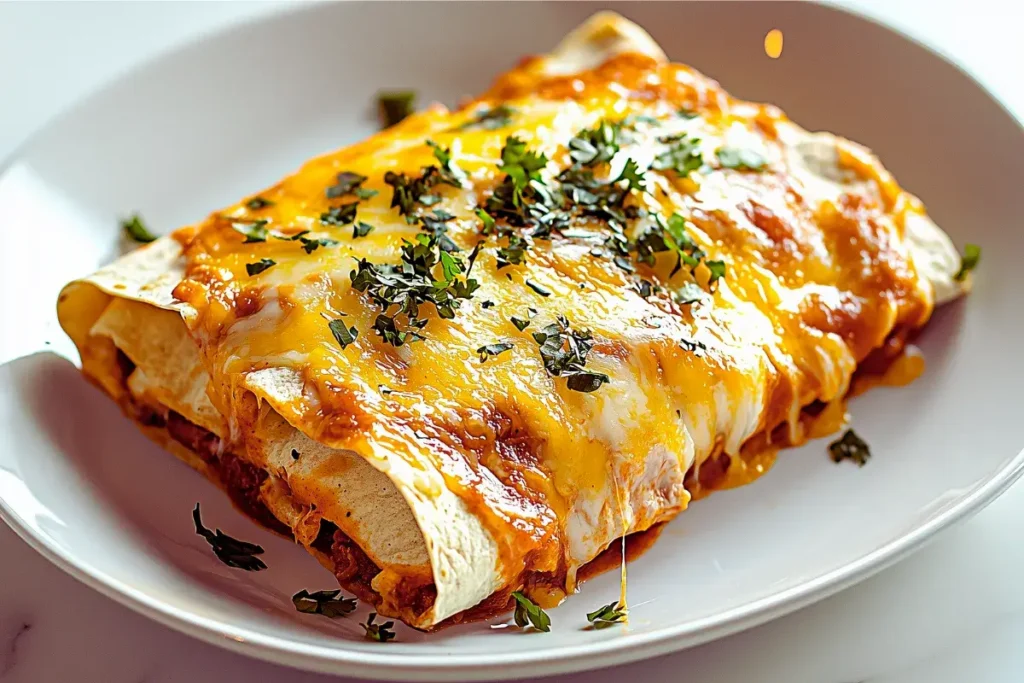
This two-step method gives you the best of both worlds: a tender inside and a visually stunning finish. It’s ideal for cheese-heavy enchiladas or when you want that authentic, oven-baked look without sacrificing flavor.
Still asking yourself, should you bake enchiladas covered or uncovered? With this hybrid method, you don’t have to choose. You can enjoy the rich, moist flavor of covered baking with the crisp finish of uncovered perfection.
Common Mistakes to Avoid
Adding Too Much Sauce
When it comes to enchiladas, more sauce isn’t always better. In fact, drowning your dish in sauce is one of the fastest ways to end up with soggy, limp tortillas. A light layer on the bottom and a modest pour over the top is more than enough to keep things moist without turning everything to mush.
Another tip? Warm the sauce before using it. Pouring cold sauce over your rolled enchiladas can affect how evenly they bake, especially if you’re cooking them covered.
So if you’re wondering again, should you bake enchiladas covered or uncovered?, keep in mind that too much sauce can throw off either method. Covered baking will trap excess moisture, while uncovered baking may still leave your dish watery underneath.
Not Pre-cooking the Fillings
Skipping the step of pre-cooking your fillings can lead to uneven texture and flavor. Whether you’re using ground beef, beans, or chicken, make sure everything is cooked and seasoned before rolling it into tortillas. This ensures everything heats through properly in the oven and doesn’t release extra moisture while baking.
Plus, when the filling is pre-cooked, you reduce the risk of sogginess—especially if you choose to bake your enchiladas covered.
Avoiding these simple but common mistakes can be the key to mastering the art of enchiladas, no matter which baking method you prefer.
Final Verdict: Should You Bake Enchiladas Covered or Uncovered?
So… should you bake enchiladas covered or uncovered? After all the pros, cons, and techniques we’ve explored, the answer really boils down to your desired result.
If you’re aiming for soft, moist enchiladas where the sauce and fillings blend into a flavorful bite—bake them covered, at least for most of the time. This helps retain moisture and melts the cheese evenly. It’s also a great method if your tortillas are a bit fragile.
But if you’re craving a crisp top layer with bubbling, browned cheese—go uncovered, at least for the final stretch. Better yet, combine the two: cover them for the first 20 minutes, then uncover for the last 10 to achieve balance.
Each method brings something special to the table. Knowing when and how to use each one makes all the difference.
With these tips, you’ll never have to ask Should you bake enchiladas covered or uncovered? again—you’ll just know.
Want to put your enchilada knowledge to the test? Try this flavorful twist: Jalapeño Cream Cheese Chicken Enchiladas — a creamy, spicy recipe that’s perfect for experimenting with covered vs. uncovered baking.
Frequently Asked Questions
What makes enchiladas better?
Great enchiladas are all about balance—sauce, texture, and fillings. Use a flavorful, homemade sauce, avoid overstuffing, and make sure your tortillas are lightly fried or warmed to prevent tearing. Also, baking them correctly—whether covered or uncovered—can elevate the taste and texture.
What is the secret to non-soggy enchiladas?
The secret is all in the prep. Lightly frying the tortillas helps them resist sauce absorption. Also, avoid watery fillings and don’t overdo the sauce. Whether you bake them covered or not, managing moisture is key. But don’t forget to ask yourself, should you bake enchiladas covered or uncovered?, because that single choice shapes how the whole dish turns out. Covering too long can lead to steam build-up, so uncovering for the last 10 minutes often helps.
Are enchiladas better with corn or flour tortillas?
Corn tortillas are more traditional and offer a rich, earthy flavor. They also hold up better when lightly fried. Flour tortillas, while softer and easier to roll, can get mushy quicker—especially when baked covered for too long.
What is the secret to good enchiladas in the oven?
Use fresh ingredients, don’t overload the sauce, and bake at the right temp. And remember: Should you bake enchiladas covered or uncovered? That depends on your texture goals—moist and tender or crisp and cheesy.
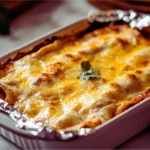
Should You Bake Enchiladas Covered or Uncovered? 7 Delicious Tips
- Total Time: 40 minutes
- Yield: 6 servings 1x
- Diet: Vegetarian
Description
A complete guide to help you decide whether to bake enchiladas covered or uncovered. Learn expert tips, avoid common mistakes, and discover how different methods affect texture, flavor, and presentation.
Ingredients
- 10 corn or flour tortillas
- 2 cups shredded cheese (cheddar, Monterey jack, or blend)
- 2 cups cooked shredded chicken or beans
- 2 cups enchilada sauce (red or green)
- 1/2 cup chopped onion (optional)
- Olive oil for frying
- Salt and pepper to taste
Instructions
- Preheat oven to 350°F (175°C).
- If using corn tortillas, lightly fry in oil to prevent sogginess.
- Fill tortillas with chicken or beans and some cheese, then roll and place in a baking dish.
- Pour enchilada sauce evenly over the rolled tortillas.
- Sprinkle remaining cheese on top.
- Cover with foil and bake for 20 minutes.
- Uncover and bake an additional 10 minutes for a crispy, bubbly top.
- Let rest 5 minutes before serving.
Notes
- For crispier enchiladas, bake uncovered during the last 10 minutes.
- Avoid over-saucing to prevent soggy tortillas.
- Try broiling for 2-3 minutes at the end for golden cheese tops.
- Prep Time: 10 minutes
- Cook Time: 30 minutes
- Category: Dinner
- Cuisine: Mexican
Nutrition
- Calories: 320 kcal
- Sugar: 3 g
- Sodium: 680 mg
- Fat: 16 g
- Saturated Fat: 8 g
- Carbohydrates: 28 g
- Fiber: 4 g
- Protein: 18 g
Keywords: bake enchiladas with foil, enchiladas oven tips, how to cook enchiladas, enchilada baking method, covered enchiladas, crispy enchiladas

